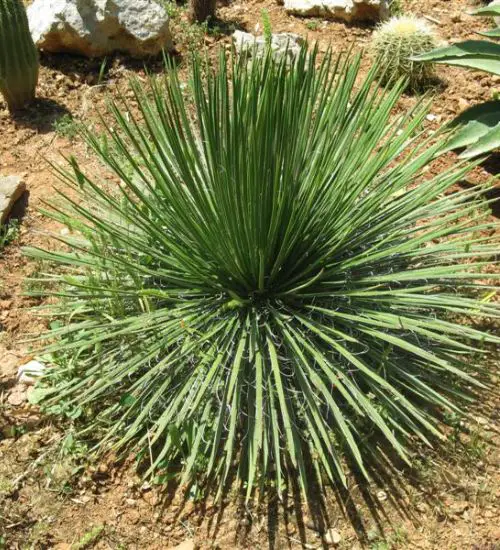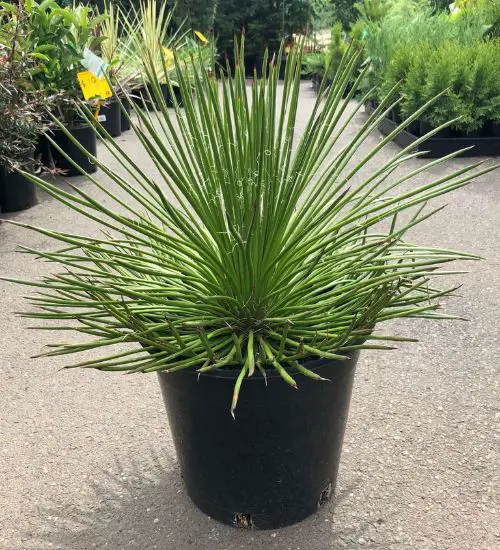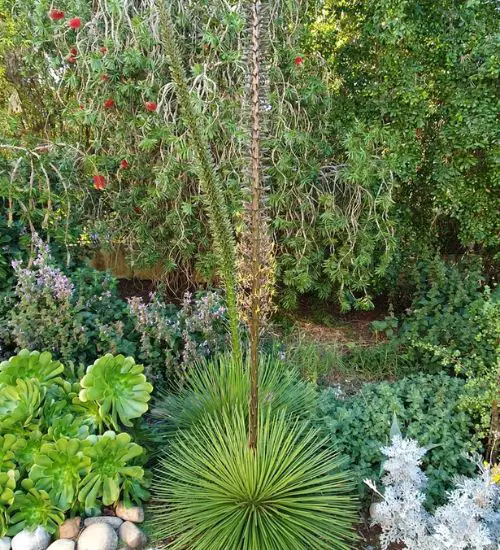Sun: full sun to partial shade
Water: Typical water needs for a succulent
Temperature: Zone 1a from -60° F to -55° F (-51.1 ° C to -48,3° C) to Zone 11b from 45° F to 50° F (7.2° C to 10° C)
Winter Survival: Cold hardy to 0°C
Propagation: seeds
Flower: in the summer
Flower Type: Yellow
Toxic: Can be toxic to humans and animals
Dormant: winter
Space Requirement: Outdoors
Common Problems: No major pests, Plants may rot if overwatered
Where to buy Agave geminiflora?
Basc Care for Agave geminiflora
Watering
Watering for Agave geminiflora is a simple task. It requires Typical water needs for a succulent.
One simple tip for you is that you can use some online apps to check the soil status before you go water your succulents. I would recommend the ThePlantsCheck app, it has some nice features there.
Fertilizing
Only feed this succulent during its active growing seasons which means no information. Use the right fertilizer applied in the right amounts. Applying half-strength balanced fertilizer every month or so is recommended for optimal results.
Do not fertilize during winter as the plant is dormant.
Sun & Location Requirements for "twin flowered agave"
Agave geminiflora requires full sun to partial shade. It's best to keep it in an area of your garden or home that gets plenty of bright, indirect sunlight throughout the day. When temperatures are too hot and direct sunlight is too intense, try moving "twin flowered agave" to a shadier spot for part of the day.
Agave geminiflora is a cold-hardy variety that can survive temperatures as low as 0°F. It has adapted to its environment by developing thick, succulent leaves and stems that are able to retain moisture in winter months. Its fleshy leaves also help protect the plant from extreme cold temperatures, allowing it to survive even the harshest cold conditions.
Any succulents in the group will need a large space to grow. You should place your pot outdoor. Since this plant needs a lot of space than other succulents, you should consider not planting them together with other succulents/plants.
Agave geminiflora also benefits from some indirect light throughout the day as well, so make sure you give it enough space to soak up light without becoming too exposed to heat.
Propagation
Propagating Agave geminiflora from seeds is a great way to produce new plants without relying on cuttings or divisions. It's important to look for healthy, dark and plump seeds that are slightly sticky when touched. The soil should be pre-mixed with well-draining potting mix, before evenly sowing the seeds and pressing them into the surface. To ensure successful germination, gentle misting of the soil should be done and placed in indirect light.
Toxicity

Agave geminiflora can be toxic when ingested. All parts of the plant, such as stems, leaves and flowers, are potentially dangerous and can cause severe reactions in humans and animals when consumed. It is important to stay aware of potential dangers and avoid contact with the succulent if possible.
Pests and Diseases
Agave geminiflora is not affected too much by common pests and diseases like most of the other succulents.


